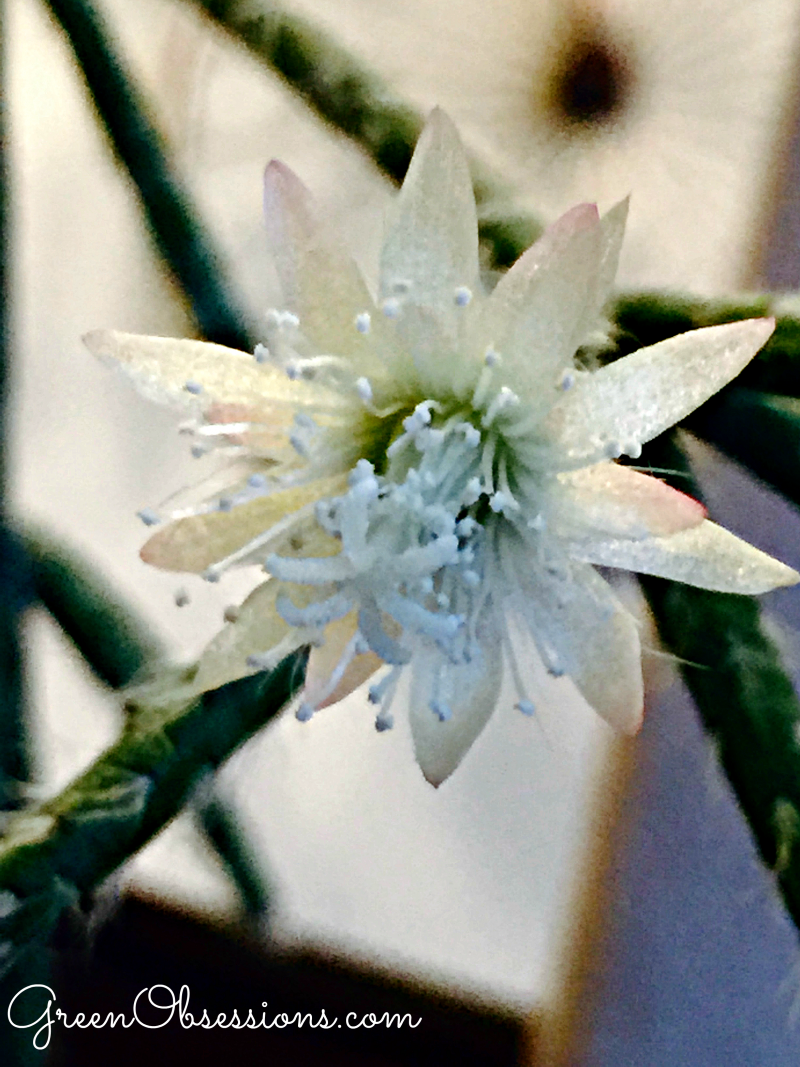
My Rhipsalis pilocarpa is flowering. Only one bloom so far but still, I’m a proud mama. I am always happy to see my plants flower because it means they are happy and I’m doing something right. Beautiful, no? I knew nothing about the genus Rhipsalis when I picked up my very own R. pilocarpa at the end of last winter. All I knew is, it was strange looking, which meant it had to come home with me. For the longest time it seemed to do nothing but just sit there. I would go to it, talk to it, brush on its fine hairs but all it did was just stare back at me unimpressed. I don’t think it attempted to socialize with my other plants. Probably because she felt strange and did not fit it in. There was no one around hairy-like hair. But I think she may have began to warm up to her neighbors by summer because her stems started to elongate and take on a red-tinged color at the ends. It looked like she was blushing all through summer. I couldn’t be happier. Apparently they tend to bloom mid-winter and have most of their flowers by Christmas. How exciting.
Rhipsalises are mostly epiphytic spineless cacti. As you can tell from the pictures, older stems hang down but she is growing new stems which seem to have some spine after all, as they stand straight. My guess is they will hang down once they get heavy from other branches growing at the tips. As I wrote about previously regarding air plants, epiphytes derive moisture and nutrients from the air and rain. I think this makes this cactus plant unusual from other cacti in that it loves humidity and doesn’t mind when I spray it with water every now and then. In fact, they are not naturally found in dry environments like the desert but rather in tropical rainforests in parts of the Caribbean and central America among other locations.
I have two Rhipsalises who I playfully call my Wicker girls. Apparently, the name Rhipsalis comes from the Greek word for ‘wicker,’ referring to their flexible branches. Of the two Wicker girls, Pilocarpa is the attention grabber and stands out over her sister Cereuscula- what with her fine white hairs or bristles on her stems which at first glance look spiky like those found on other cacti. I assure you though Pilocarpa’s hairs are harmless. They are rather soft.
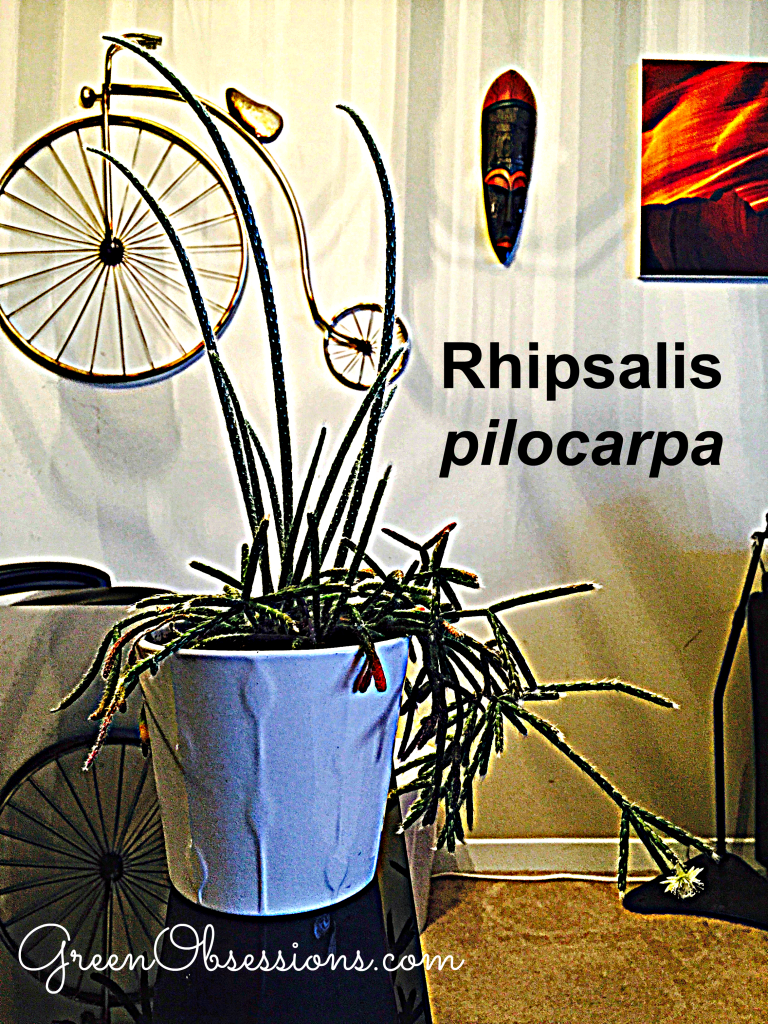
But I do like Cereuscula’s played down look. She may be plain but still demands an audience because there is something intriguing about their crustacean-like leaves. They remind me of lobster appendages or am I just hungry. I got her just a couple of weeks ago with the intention of putting the two together in one planter. Having the two different looks in one planter would be like looking at two sides of a coin, I think. I may attempt to do so after Pilocarpa is done flowering. Talking about flowering, a small berry-looking fruit appears after the flower withers and that is where it gets its common name, mistletoe cactus.
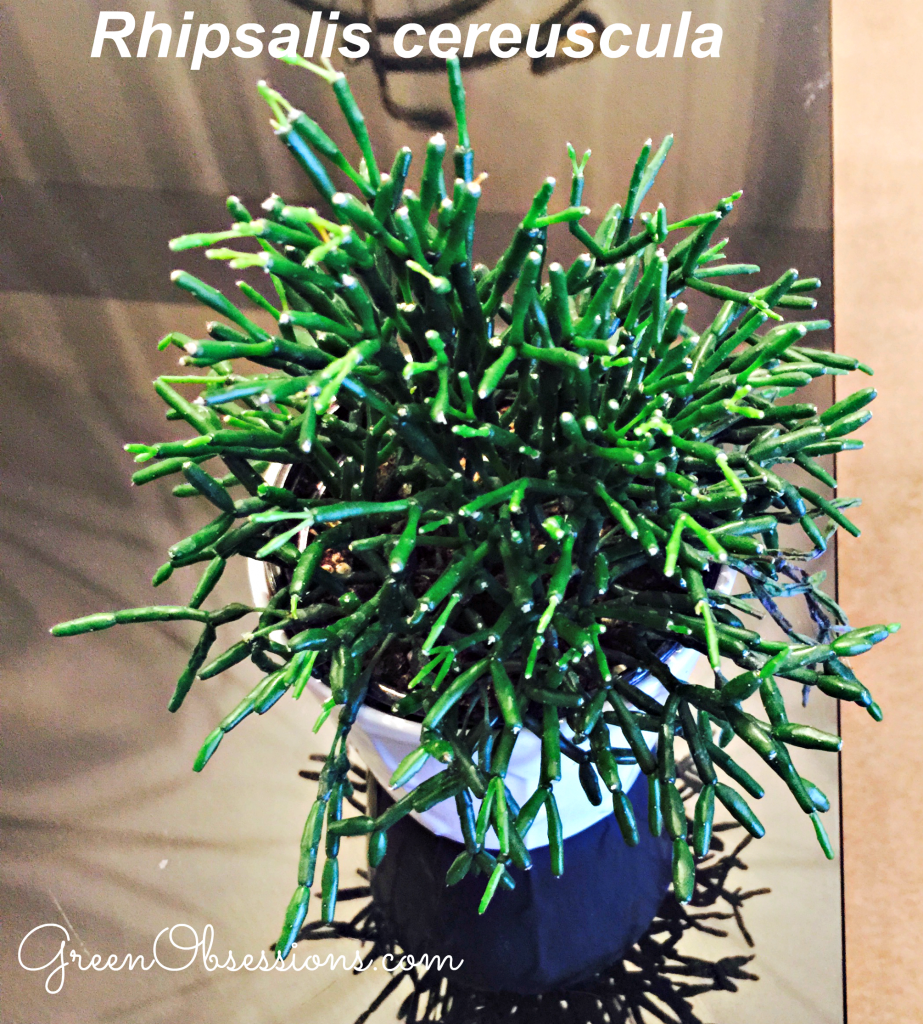
If you have Rhipsalis at home, you know how easy they are to care for. No fuss. If you’d like to pick one up, here is how you can give them all that they need.
Light: They generally like shade which I guess make it perfect for my north facing window.
Water: My rule is to water when the soil feels dry, which usually occurs every 7-10 days. Pilocarpa’s container has no drainage hole so I’m careful not to make the soil waterlogged as stagnant water can cause rotting of the roots. Cereuscula’s is in a plastic pot with drainage holes which sits in a decorative white planter. I remove it from the decorative planter for watering and make sure all the water is drained before placing back in the decorative white planter. There is a lack of information on how to water this plant in winter however, their behavior during the winter will influence how often I water them. That is if they look like they are dormant – no longer flowering or growing – I will water them less often than once a week.
Temperature: Rhipsalis can endure low temperatures up to 15 degrees celsius. That means in Canada, these plants cannot stay out in winter 😉
Feeding: As with most plants, you can feed them diluted fertilizer following the instructions on the bottle. They don’t need to be fed though in winter.
Pests: I don’t think this is an issue. I have not spotted any on mine yet.
Propagation: Stem cuttings can be used to grow a new plant. You can leave the stem cuttings to dry making sure the cut tips are calloused over. Then you can put them in the soil. The use of a rooting hormone is optional. I have had success with growing other succulents this way from leaf cuttings, however I haven’t had success growing a new plant from stems of the R. pilocarpa. They just tend to dry out and not grow roots when I plant them in the soil. Cereuscula shed a few stems so I’m going to put them in a cactus mix soil to see if they grow roots.
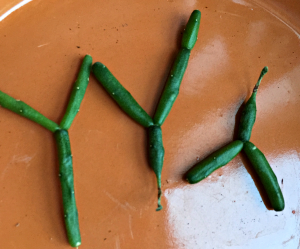
Till next time.
Share the Plant love:
Related
Barbara
Hi, I’m Barbara and I’m a little obsessed with house plants. I share my house plant adventures in the hopes of inspiring you to continue to enjoy the greens in your home. And if you have no plants (yet!) I hope this blog inspires you to add some green to your home. So go on! Try it! I think you might quite like it. And who knows? You may end up being … obsessed too.

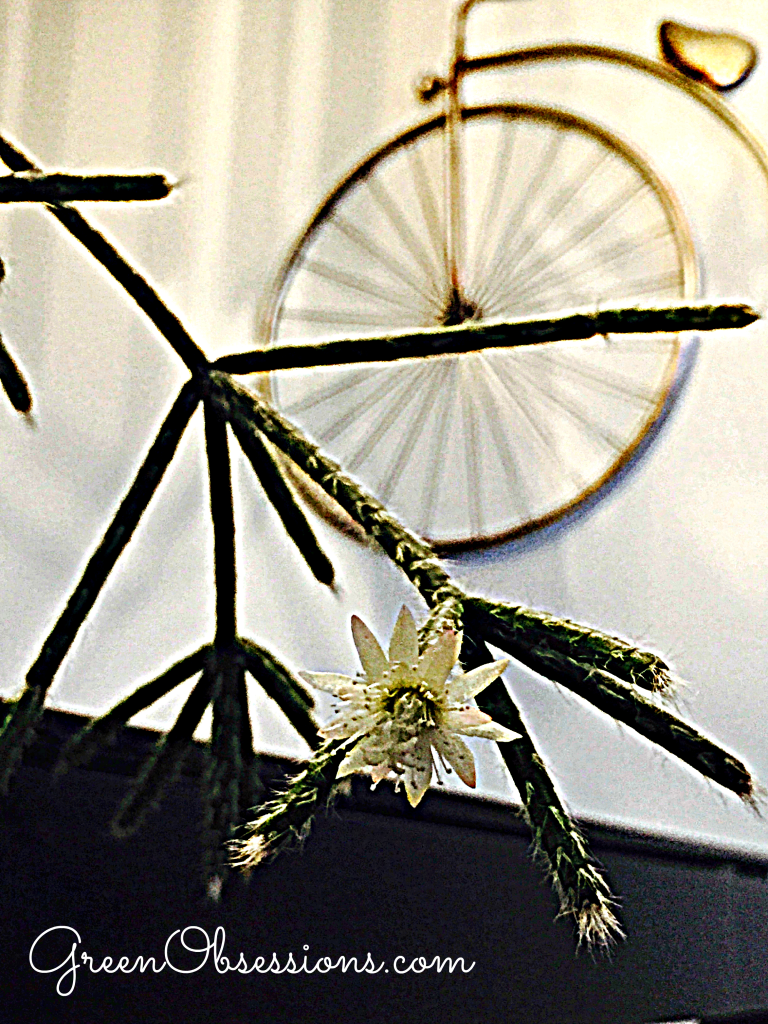
Kathy
My Rhipsalis is about 20 years old. The early parts of it look like your picture. However the new growth always has “hairs”. Just wondering. I thought this one was called drunkards dream. But it looks like yours.
14 . Mar . 2020Lola Ramirez
Hi Barbara, I also have a mistletoe cactus and I noticed a lot of points (the extreme parts) are just growing black or getting black after they grew. Did you experience this? If yes, any idea on how to solve it? I didn’t overwatered and it’s mostly in shade/partial late evening sun. Maybe the plastic pot is not good for it? Thank you in advance!
22 . Jul . 2018